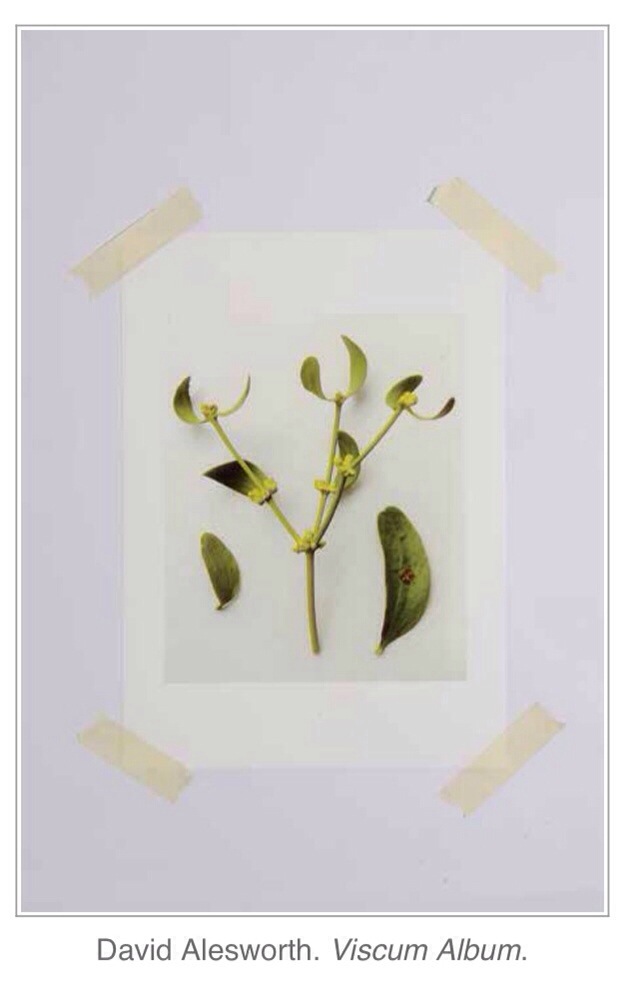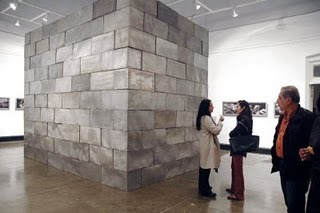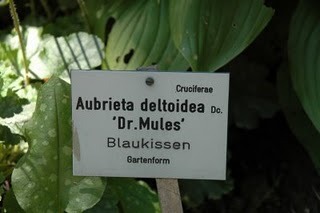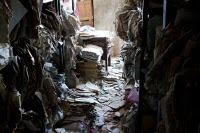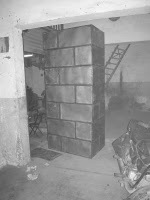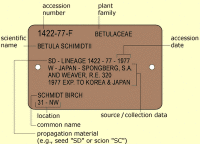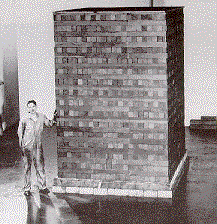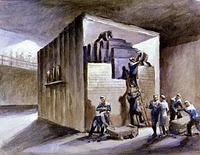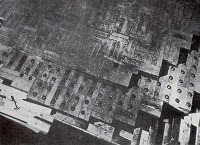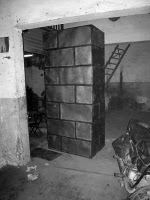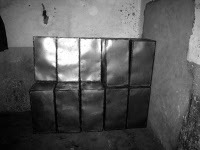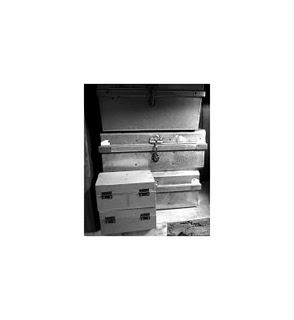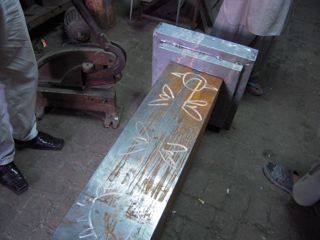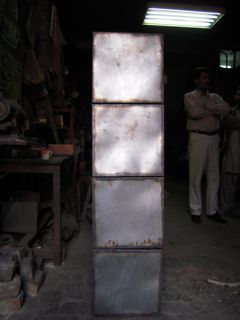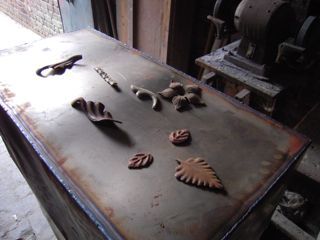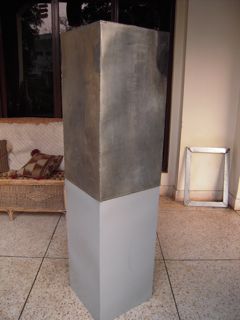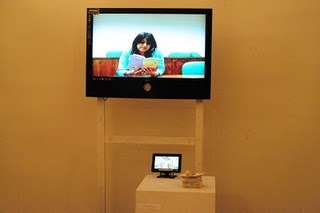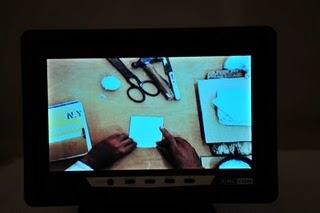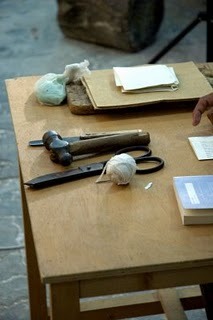The Autobiographical
HALF-LIFE
New Work
David Alesworth | Huma Mulji
Zahoor ul Akhlaq Gallery
National College of Arts | Lahore | Pakistan
me. This sculptural installation has other resonances, the formality of artists such as (late period) David Smith, Donald Judd and Karl Andre. This is slightly tongue in cheek reference to such minimalist concerns, through the lens of time and place. This is another prayer for sanity and peace, the way my “Two Bombs Kiss” was in the early ‘90’s. It was within the unshielded CP-1 reactor that plutonium production became a practical proposition. “Seaborg, (the discoverer of Plutonium) was asked to suggest a name for the element he had discovered. He decided to respect the tradition begun with uranium, named for the planet Uranus, then neptunium — the 93rd element, found in 1940 — for Neptune. As the next planet in the solar system was Pluto, he suggested the new element be called plutonium. No one thought to point out that the deity after which the planet Pluto was named was the Greek god of hell, the Roman god of death.” All the Plutonium on the planet now (a completely man‐made element) is around 50 tons; enough, if judiciously employed, to entirely destroy life on the earth. It is undoubtedly the most toxic substance in existence. I see “12.2.42” as part tribute (to scientific endeavor) and part warning (of the imperfect nature of mankind’s knowledge). The smallness of mankind’s achievements set against the vastness of creation. The ultimate failure of all technologies and civilization itself. It is a Vanitas sculpture. It critiques the arrogance of scientific knowledge. I half suspect this world will be sucked through the eye of an atom sized black‐hole, produced in the new Cern accelerator experiements. What a suitable ending it would be for this planet, wrecked as it is, by mankind’s insatiable greed. The units are identical but also quite distorted from the heat of their welding. The proportions of 14 x 14 x 28 inches directly address the scale of one’s body. I investigated other sizes and ratios to arrive at this. It is to do with one’s span. I realize these are very much the concerns of the early minimalists, like Caro, who was once Henry Moore’s protégé. The idea of span and of being body‐scaled are terms that could be right out of Moore’s own vocabulary. Though such concerns are readily discernible in ancient Egyptian sculpture (all of the canonical works.) My undergraduate dissertation was on the cannon of proportion in ancient Egyptian sculpture. I welcome the “wobble” that sign or life. It’s the imperfection that makes energy flow in the work, something I’ve long used in my practice. A tension between stillness and movement. There’s a correlation between the persistence of an official record and that of radioactive waste. I’m thinking of Half-Life as the link between the forest of files (The Record Room Series), undying, unending and uncountable, and the beginning of the nuclear age. Taking Fermi’s first pile CP‐1 as the beginning of this as it was here that Plutonium was first produced, albeit in tiny quantities. On that day that CP-1 first went critical for only 28 minutes and Plutonium was produced in its nuclear flux. Leo Szilard lingered on the balcony until most people had left, then turned to Fermi, shook his hand, and said that he thought the day would go down as a “black day in the history of mankind.” This cube of steel boxes is as much a play with the proportions of the room and scale of the body as it is a reference to nuclear power. Waste from Chicago Pile1 was buried in nearby woodland, this was not a fortuitous beginning to the nuclear age.
about what the board calls a “Second Nuclear Age” marked by grave threats. The board also cited “escalating terrorism, and new pressure from climate change for expanded civilian nuclear power that could increase proliferation risks.” The Doomsday Clock is now set at seven minutes to midnight. The Doomsday Clock is a symbolic clock face that the Bulletin has maintained since 1947 at its headquarters on the campus of the University of Chicago. It uses the analogy of
the human race being at a time that is a “few minutes to midnight” where
midnight represents destruction by nuclear war. The decision to move the minute hand is made by the Bulletin’s Board of Directors in consultation with its Board of Sponsors, which includes 18 Nobel Laureates. The “Bulletin of the Atomic Scientists” was founded in 1945 by University of Chicago scientists who had worked on the Manhattan Project and were deeply concerned about the use of nuclear weapons and nuclear war.
“The Garden of Babel”
‘Half-Life” Video Documentation
“Half-Life”
“Base of the World, Magic Base No. 3 by Piero Manzoni 1961 Homage to Galileo.”
The world as sculpture.
Mona Hatoum, “Socle du Monde” 1992-1993
Wooden structure, steel plates, magnets and iron fillings
64 5/8 x 78 3/4 x 78 3/4 in. (164 x 200 x 200 cm)
Photo: Edward Woodman
Besides a tribute to Manzoni’s sculpture by the same name of 1961, Hatoum says like the black stone of the Kaaba, thirty years of wars and deceits have turned Manzoni’s pure work black with the sins of man.
“12.2.42”
I see “12.2.42” as part tribute (to scientific endeavor) and part warning (of the imperfect nature of mankind’s knowledge). The smallness of mankind’s achievements set against the vastness of creation. The ultimate failure of all technologies and even civilization itself. It is a Vanitas sculpture. It critiques the arrogance of scientific knowledge. I half suspect this world will be sucked through the eye of an atom sized black-hole, produced in the new Cern accelerator. What a suitable end it would be for this planet, wrecked as it is, by mankind’s insatiable greed.
“A Taxonomy of Eden”
“Now the LORD God had planted a garden in the east, in <st1:city><st1:place>Eden</st1:place></st1:city>; and there he put the man he had formed. And the LORD God made all kinds of trees grow out of the ground trees that were pleasing to the eye and good for food. In the middle of the garden were the tree of life and the tree of the knowledge of good and evil.”<o:p></o:p>
Genesis 2:8 9
In the Bible, God tells the man to name the animals (Genesis <st1:time minute=”19″ hour=”14″>2:19</st1:time>). In the Qur’an, Allah teaches Adam the names “of all things” and Adam repeats them (Ta-ha 20:120).
els for Eden, having learnt of all the names of the plants from God. Unfortunately many of these names are embedded with tales of Empire, the names of Victorian naturalists, indigenous names latinized and other slight problems in the overall scheme of things. I was thinking I might add zoological names plates for the reptilian and mammalian inhabitants of Eden, at least a few key characters. This is still under consideration. Finding convincing and possible names for the plants of Eden is a longer task. I’ve started researching Quaranic and biblical references, but they then need re-translating into botanical Latin, it’s going to take some time. I will then commission engraved labels, which I will in turn photograph. I am hoping to do one garden work for the NCA show, by 14th. February 2009. This will be a grid of botanical labels, in place of a garden. “All the Names” (re. Samarago’s book) or “The Naming of Names” (re. Anna Parvord’s book) may be title options. This will work alongside the file (Record Room) images. I will combine photographs of botanical labels from multiple locations, the regional languages also impinge in this supposedly international language of science. The labels are grey and the assemblage feels like a mausoleum. This also serves as a pointer to environmental issues, as so many plant names may survive the species (in the wild) in many cases.
NCA Show references.
CP-1
1942
The idea that CP-1 was built in a university squash court has always appealed to me.
(Chicago Pile-1) This appears to be a stack of graphite blocks from the core prior to assembly.Work on “Fermi’s Pile”, 17 Jan. 2009
Working amongst the small metal workshops of Lahore’s Lakshmi Chawk area.
Stack of 30 units, from a total of 180 units.
Work the in progress for NCA Show, Jan. 2009.
“Column of Stewardship”sample, trying plant motifs for scale. The idea is four of these guard “Fermi’s Pile” like the guardian figures around Tutankhamen’s outer sarcophagi, in the Cairo Museum.
MS stamped floral motifs, I’m considering them for the “Column’s of Stewardship”, they’re a bit “Truck Art”, crude, heavy and undifferentiated.
A prototype MS, Zinc plated frame. This one’s got a hot-dip surface. This has a thicker Zinc deposit which is good, for oxidizing, but also heavily crystalline, which isn’t what I’m looking for. The second frame sample is currently in progress.
